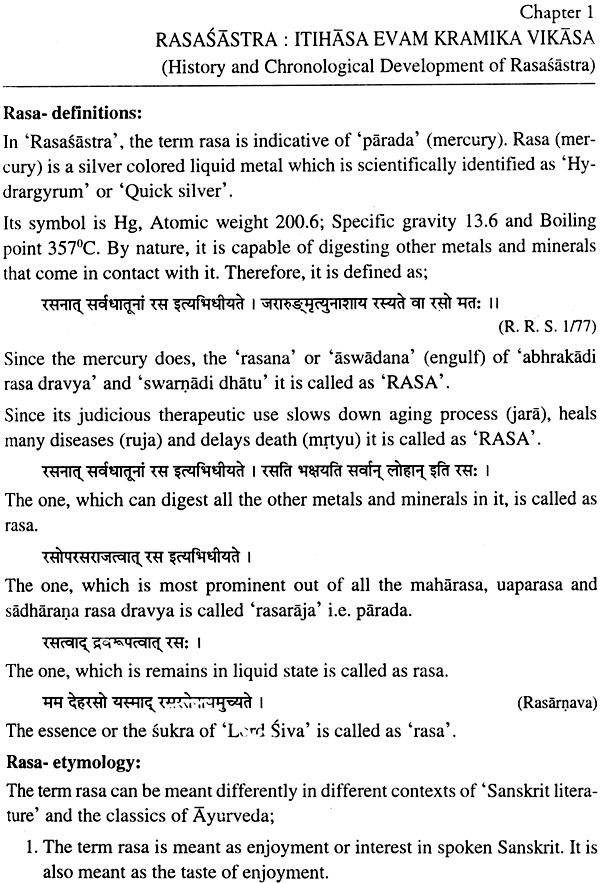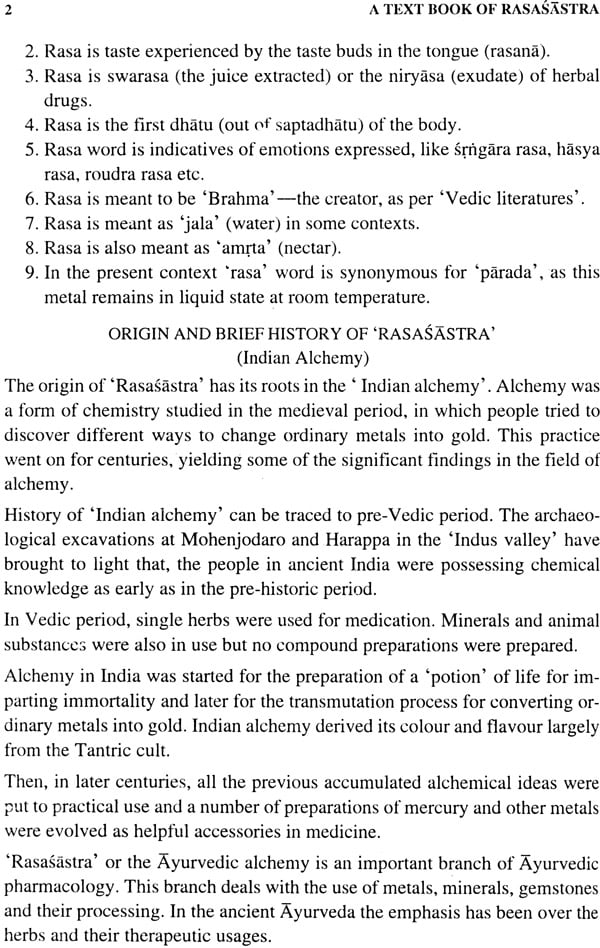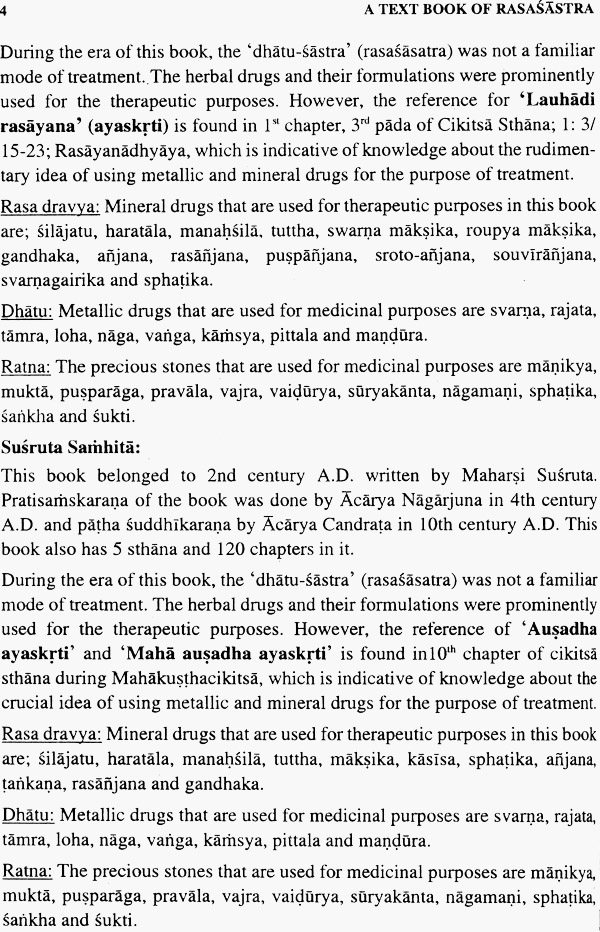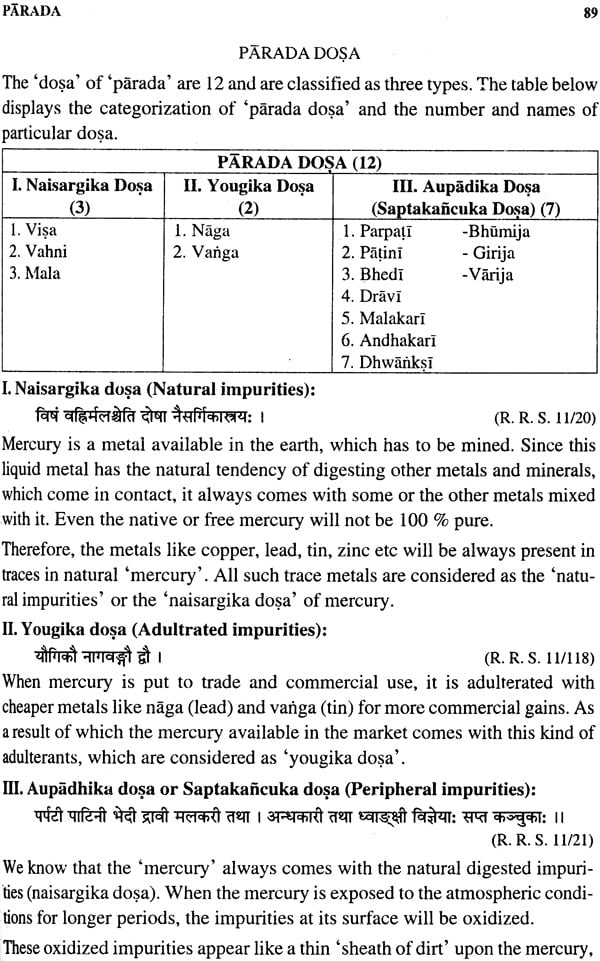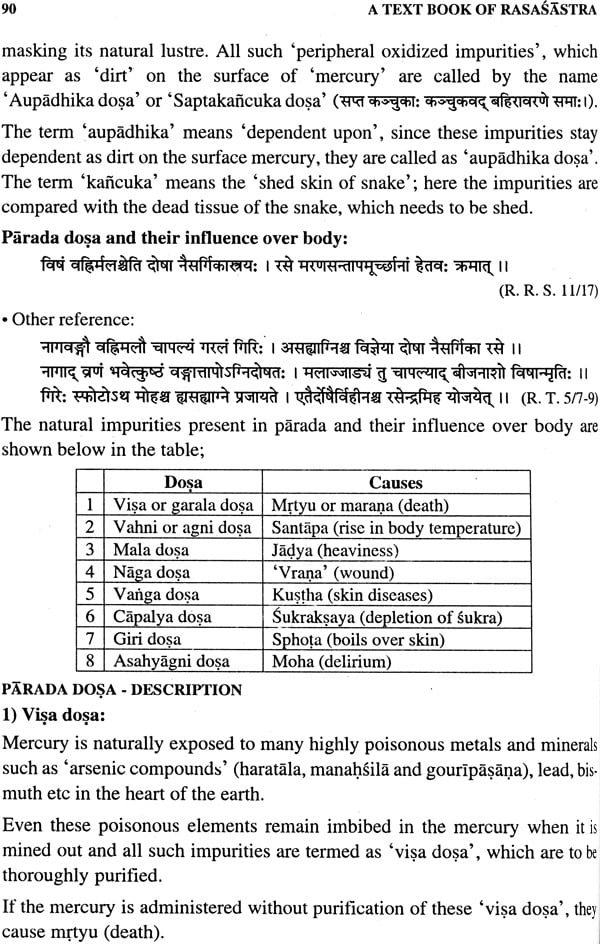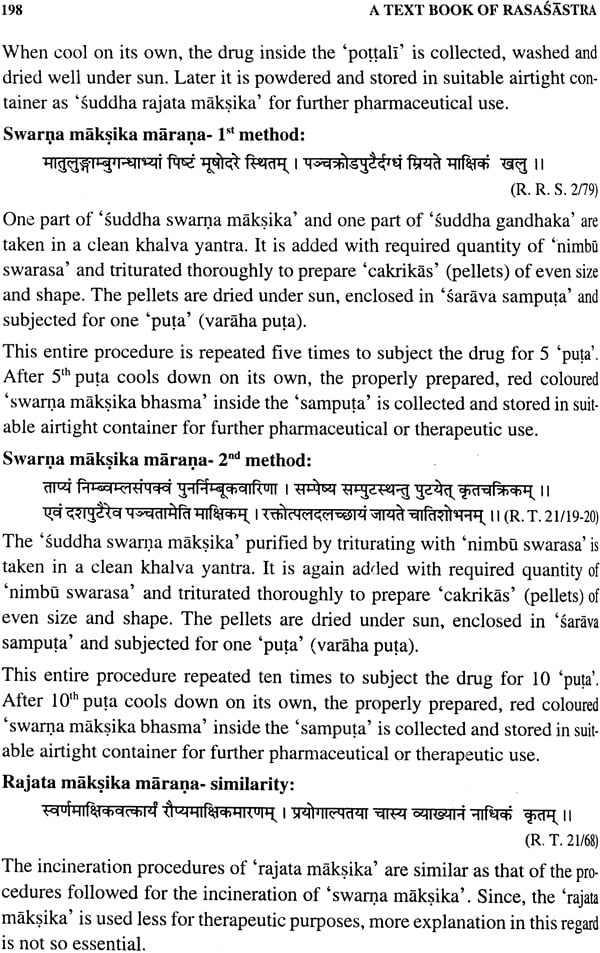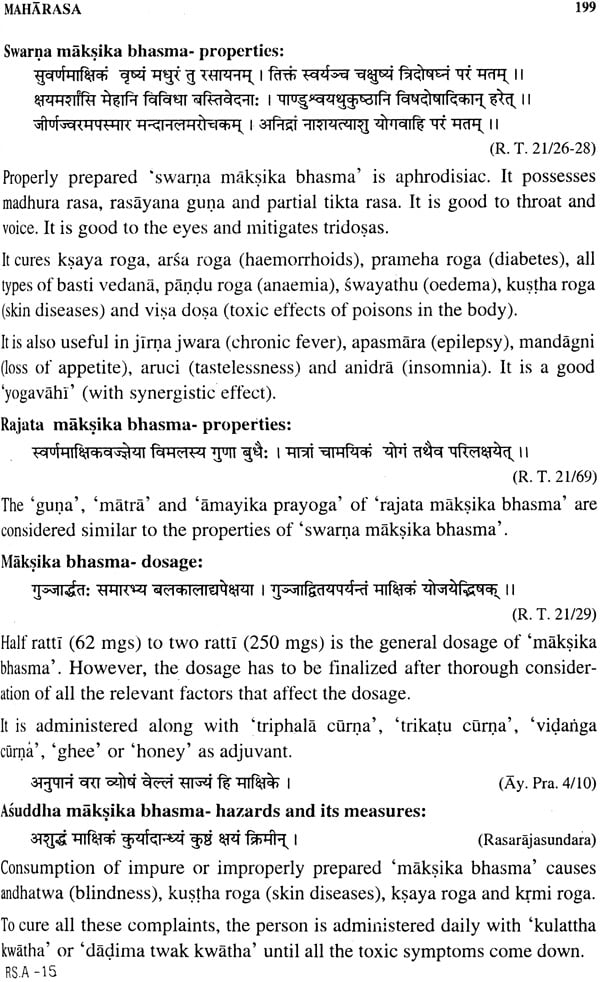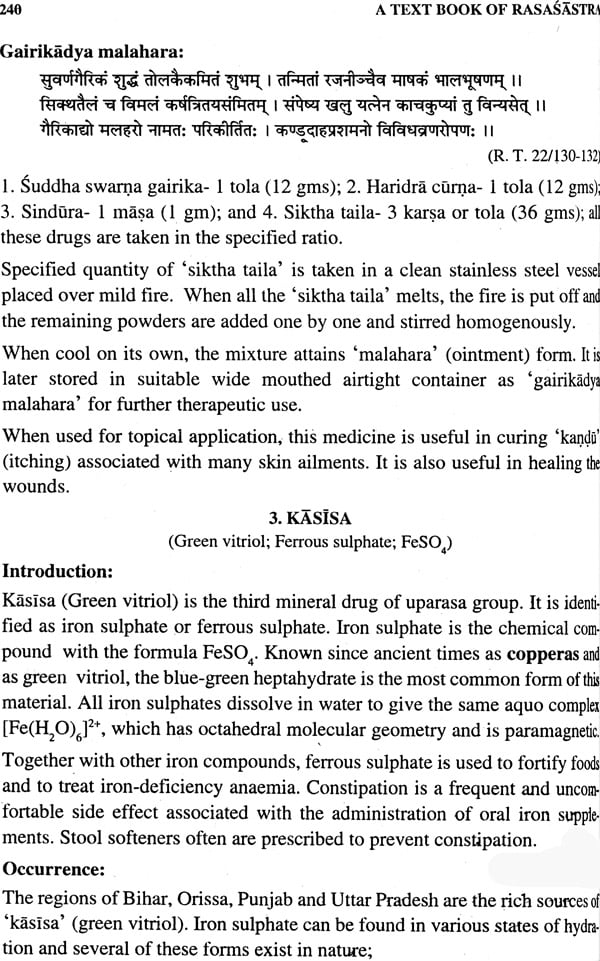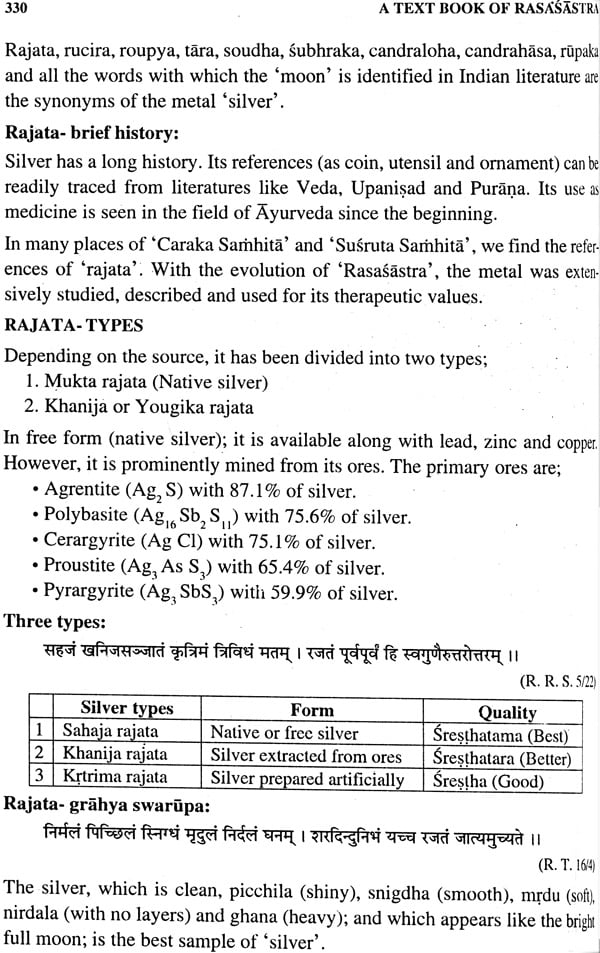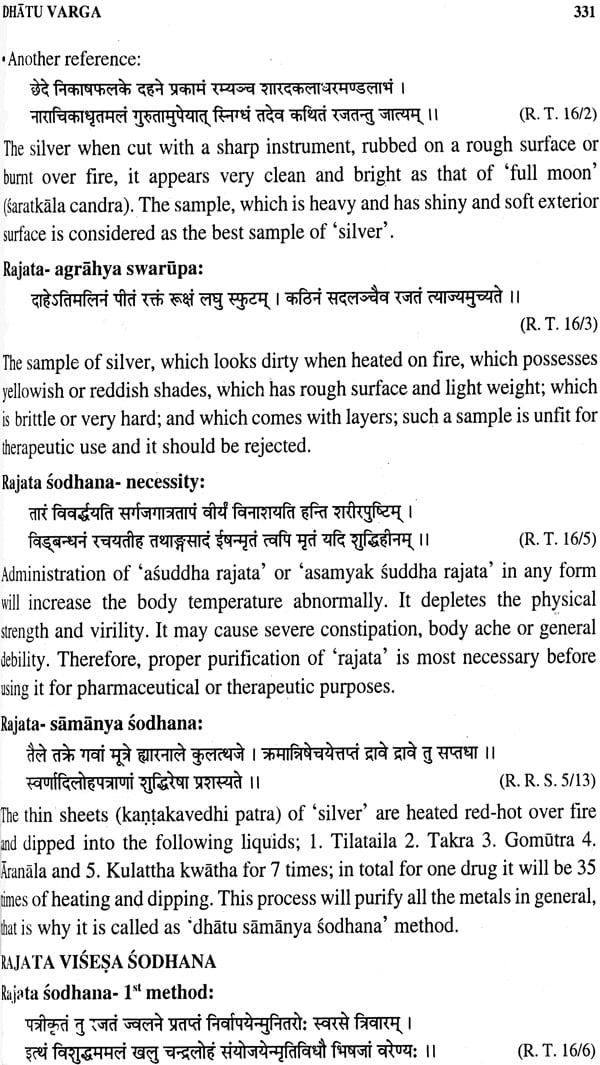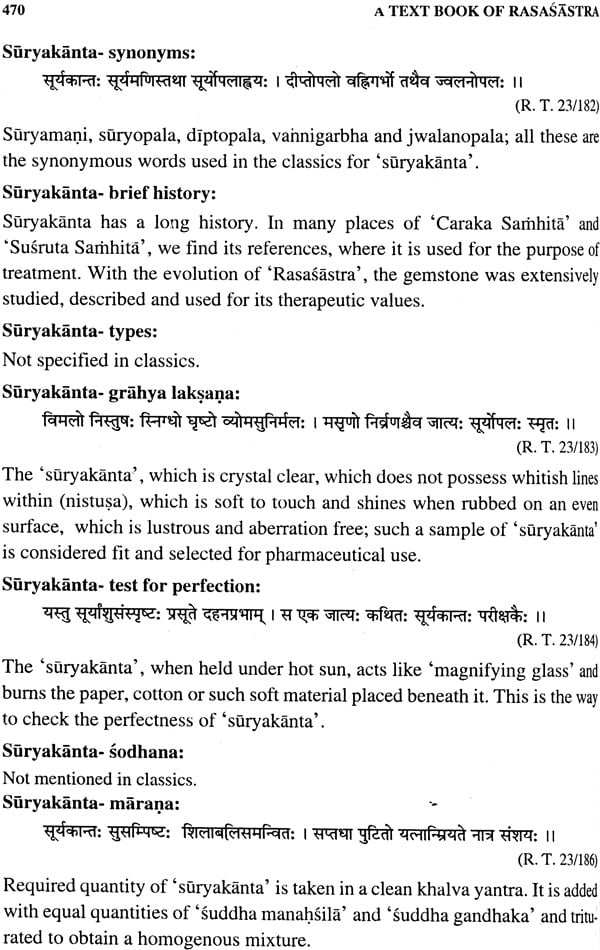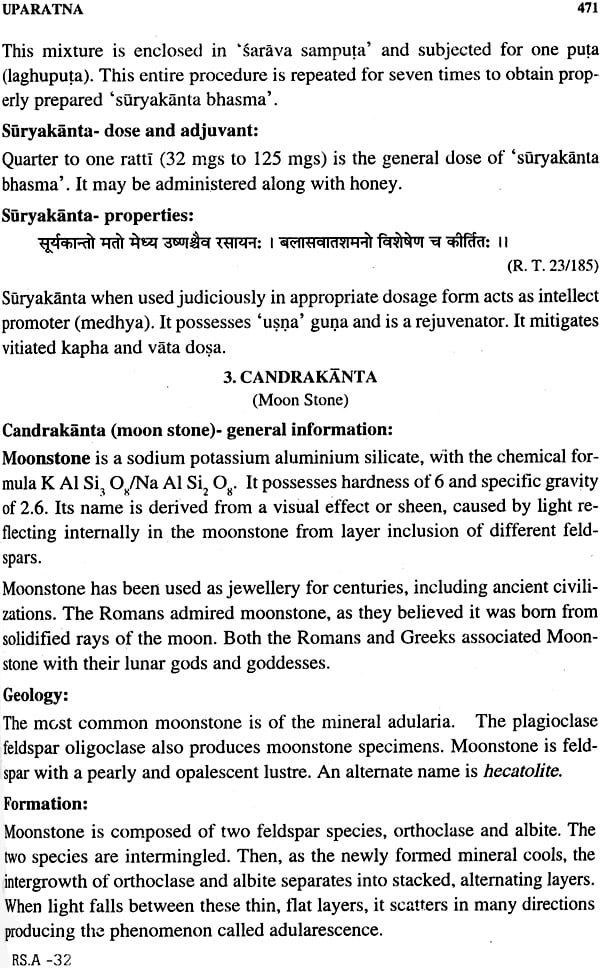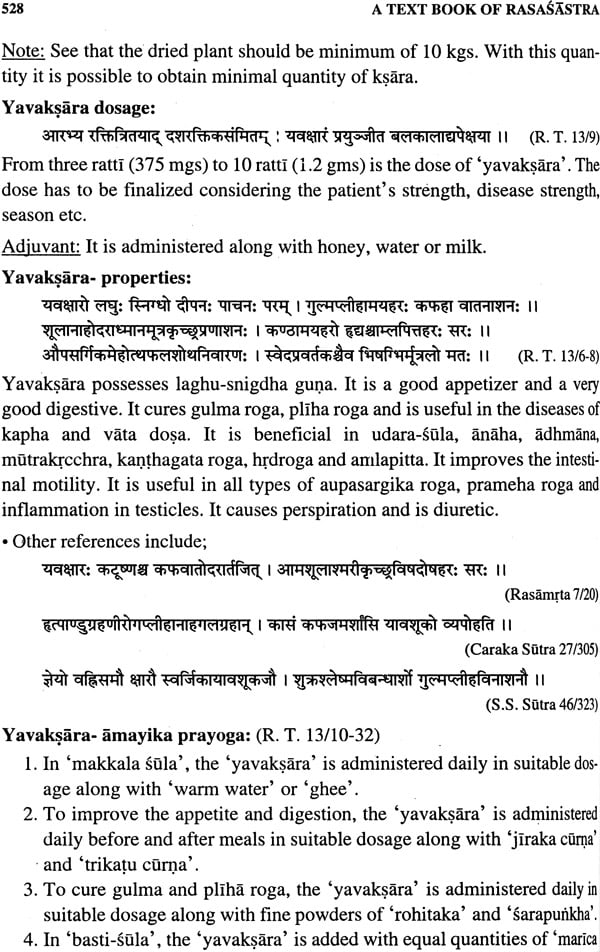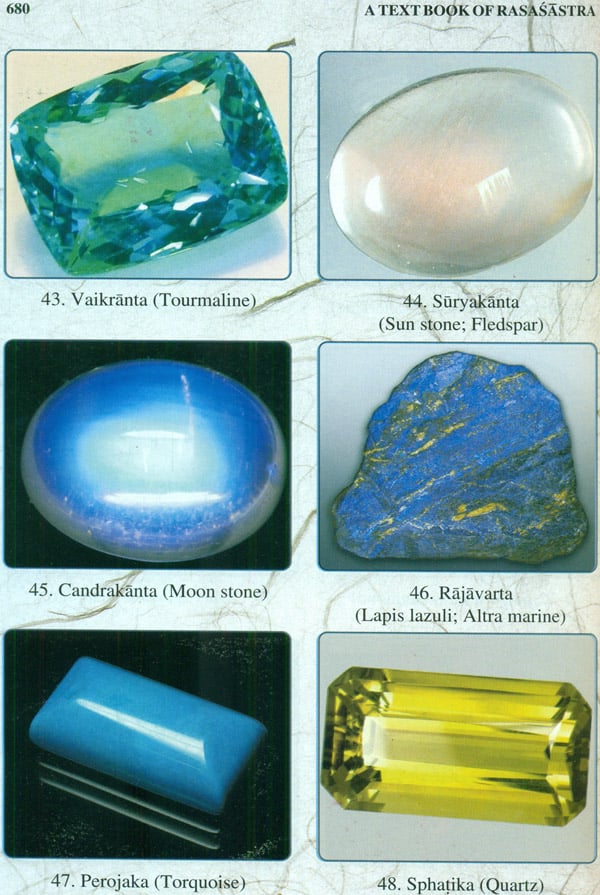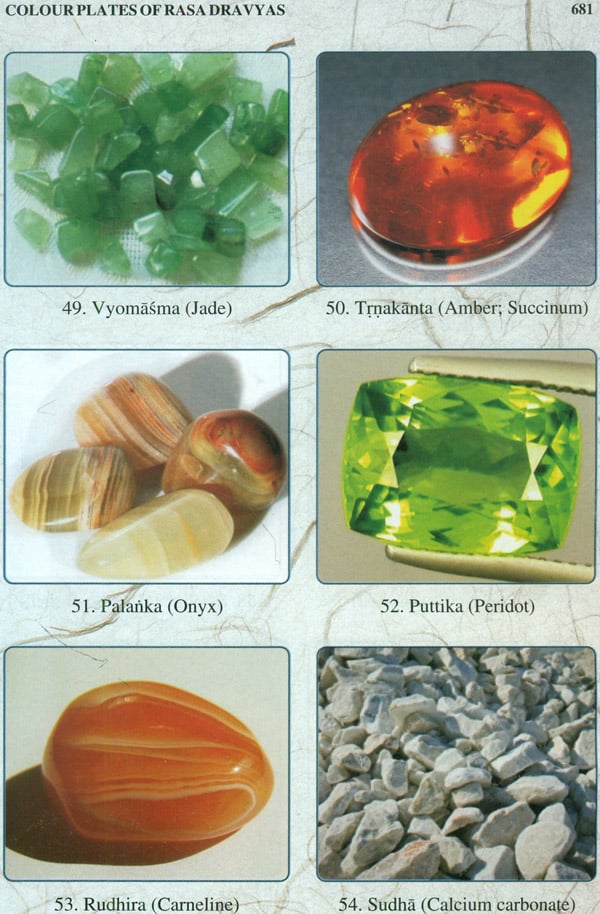
A Textbook of Rasasastra (Iatro-Chemistry and Ayurveda Pharmaceutics)
Book Specification
| Item Code: | NAK616 |
| Author: | Dr. Ravindra Angadi |
| Publisher: | Chaukhamba Surbharati Prakashan |
| Edition: | 2022 |
| ISBN: | 9789383712184 |
| Pages: | 724 |
| Cover: | PAPERBACK |
| Other Details | 9.5 inch x 6.0 inch |
| Weight | 920 gm |
Book Description
About the Book
This book incorporates 27 chapter framed strictly as per most recent UG and Pg syllabus of Rasashashtra autlined by CCIM.
The chapters, its concepts and the formulations dealt here are earnestly motivated by ;’scientific approach’, ‘rationality’, practical applicability’, ‘present day utility’,’feasibility’ and their worthiness in the field of treatment’.
More than one method of purification and incineration of ‘Rasadravya’ are intentionally explained in the book to make the students understand the rationality behind each method. UG students my choose the easiest method advised by their learned teachers. However, for PG scholars it is better if they meticulously go through all the explained methods to evaluate, compare, and understand the rationality.
It is appealed to the readers of this text to think over the explained concepts with an open and unconventional mindset.
It is appealed to the readers of this text to think over the explained concepts with an open and unconventional mindset.
Hope this book will be useful to everyone in the field of Ayurveda, especially to the under graduates. The postgraduates and the students appearing for PG entrance examination.
About the Author
Dr. Ravindra Angadi works as Associate Professor and recognized PG guide in Post Graduate department of Rasa Shastra and Bhaishajya Kalpana at SDM college of Ayurveda, Kuthpady, Udupi, Karnataka since 2003.
His earlier books: A Textbook of Bhaishajya Kalpana (as per CCIM’s new UG & PG Syllabus) and Vaidyaka Pratibhasa Pradip both published by chaukhamba Surbharati Prakashan Varanasi are widely appreciated and blessed by seniors in the field; and are gladly accepted by the student fraternity of Ayurveda.
Preface
The origin of 'Rasasastra' has its roots in the 'Indian alchemy'. Alchemy was a form of chemistry studied in the medieval period, in which people tried to discover different ways to change ordinary metals into gold. This practice went on for centuries, yielding some of the significant findings in the field of alchemy.
History of 'Indian Alchemy', can be traced to pre-Vedic period. The archaeological excavations at Mohenjodaro and Harappa in the 'Indus valley' have brought to light that, the people in ancient India were possessing chemical knowledge as early as in the pre-historic period.
Alchemy in India, was started for the preparation of a 'potion' of life for imparting immortality and later for the transmutation process for converting ordinary metals into gold. Indian alchemy derived its essence largely from the Tantric cult.
Then, in later centuries, all the previous accumulated alchemical ideas were ' put to practical use and a number of preparations of mercury and other metals were evolved as helpful accessories in medicine.
'Rasasastra' or the Ayurvedic Alchemy is an important branch of Ayurvedic pharmacology. This branch deals with the use of metals, minerals, gemstones and their processing.
In ancient Ayurveda, the emphasis has been over the herbs and their therapeutic usages. Later on the animal products, metals and minerals started to find favor of the Ayurvedic practitioners. The minerals and metals are very effective and potent for immunization, rejuvenation and elimination of diseases.
In 'Alchemy', the primary motto was conversion of ordinary metals into gold, which is a higher and valuable metal. The experts applied the same analogy to the human body and found out that the 'sanrika dhatu' can also be enriched in the same way by the use of different metals. This study came to be known as the 'Dehavada'.
The study of Dehavada and the use of metals were successful and it was found that the mercury was very useful and effective when compared to its other mineral and herbal counterparts.
In the earlier days, 'tantrics' made use of the 'rasa-cikitsa methods' for achieving immortality and these experiments were later utilized for the Ayurvedic treatments. The modern Indian Ayurveda makes an extensive use of the 'Rasasastra' so much so that it has become the vital or inseparable component of the therapeutic process.
We all know that, 'Rasasastra' is not counted among the eight branches of Ayurveda. This is indicative of the fact that 'Rasasastra' in its initial days was developed as an independent pharmaceutical science.
Eventually, 'Rasasastra' became a significant part of Ayurveda and has played a major role in the development of 'Ayurveda' in later centuries.
'Rasasastra' is the special science, which deals with the metallic, mineral and poisonous drugs. These drugs are pharmaceutically processed and rendered fit for internal administration.
This work is a humble attempt to bring a handy Textbook of 'Rasasastra', which is written as per the new syllabus outlined for both UG and PG by CCIM.
Hope it will be useful to everyone in the field of Ayurveda, especially to the under graduates, the postgraduates and the students appearing for PG entrance examinations.
Contents
| Chapter 1 | |
| History and chronological development of Rasasastra | 1-11 |
| Chapter 2 | |
| Rasasala/Bhesajagara (The Drug Manufacturing Unit) | 13-19 |
| Chapter 3 | |
| Paribhasa Prakarana (Significant Definitions) | 21-32 |
| Chapter 4 | |
| Dravya Vargikarana (Classified Drugs) | 34-39 |
| Chapter 5 | |
| Yantra (Instruments) | 40-57 |
| Chapter 6 | |
| Musa (Crucibles) | 58-67 |
| Chapter 7 | |
| Kosthi (Specially Built Fireplaces) | 68-71 |
| Chapter 8 | |
| Puta (Ancient Pyrometry) | 72-81 |
| Chapter 9 | |
| Parada (Mercury) | 83-96 |
| Chapter 10 | |
| Parada Astasamskara (Eight Special Procedures of Mercury) | 99-115 |
| Chapter 11 | |
| Parada Gati and Bandha | 116-127 |
| Chapter 12 | |
| Jarana | 129-132 |
| Chapter 13 | |
| Murcchana | 135-171 |
| Chapter 14 | |
| Rasa Dravya Vargikarana (Classification of Rasa Dravya) | 172-175 |
| Chapter 15 | |
| Maharasa | 176-225 |
| Chapter 16 | |
| Uparasa | 226-273 |
| Chapter 17 | |
| Sadharana Rasa | 274-303 |
| Chapter 18 | |
| Dhatu Varga | 304-415 |
| Chapter 19 | |
| Ratna-Uparatna (Gems and Minor Gems) | 416-467 |
| Chapter 20 | |
| Uparatna (Semiprecious Stones) | 468-490 |
| Chapter 21 | |
| Sudha Varga Dravya | 491-518 |
| Chapter 22 | |
| Sikata Varga (Silicate Minerals) | 519-523 |
| Chapter 23 | |
| Ksara Varga | 524-535 |
| Chapter 24 | |
| Visopavisa (Poison and Sub-poisons) | 536-579 |
| Chapter 25 | |
| Ausadha Yoga (Compound Formulations) | 581-643 |
| Chapter 26 | |
| Drugs & Cosmatics Act (DCA) & Good Manufacturing Practices (GMP) | 645-654 |
| UG: Syllabus | 661 |
| PG: Syllabus | 665 |
| Colour Plates of Rasa dravya | 671 |
| Alphabetical Index | 687 |
